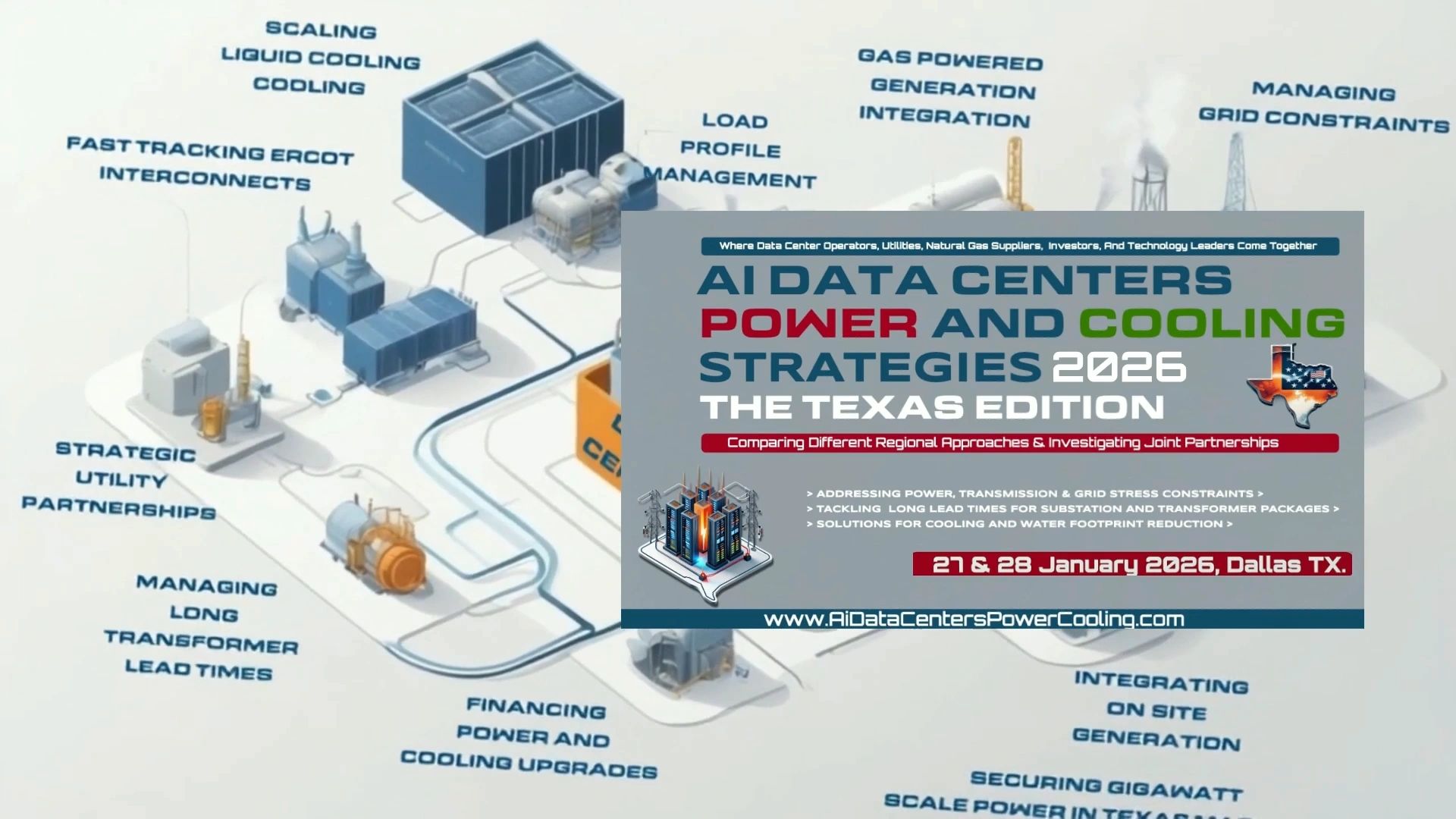For Texas — and increasingly, multiple U.S. growth corridors — the simple reality is that the grid solutions alone are unlikely to support the load demand of the next generation of AI data centers.
AI facilities are not just “bigger data centers.” – the mechanical-electrical-thermal envelope has fundamentally changed. We’re talking hundreds of megawatts per site, delivered quickly, with power-density profiles the traditional grid model was never built to accommodate.
This is the first Texas-focused business conference dedicated entirely to the twin challenges that will define AI-scale data centers: securing reliable power and deploying next-generation cooling.
For the first time, the full ecosystem will be represented in the room—behind the meter solutions, solar, nuclear, cooling innovators, grid interconnectors, on-site storage providers, modular substation and transformer manufacturers, natural gas suppliers, water utilities, and power generation leaders.
This initiative moves beyond generic “power constraints” headlines and evaluates potential solutions —beyond-the-meter options: hybrid power architectures, on-site generation, gas-to-power, backup schemes that are now effectively primary schemes, and genuine grid-parallel and grid-independent models that don’t break economics.
Because the question now isn’t whether off-grid or behind-the-meter solutions can fill the gap — they have to. The real question is how quickly operators, suppliers, and regulators can work out the commercial and technical models before load growth outruns infrastructure reality.
The operators who secure power — whether through the grid, hybrid architectures, or on-site generation — are the ones who will scale. Everyone else may experience delay friction.
This event exists to accelerate that advantage. We bring operators, energy providers, financiers, and policymakers into the same room to align decisions, shorten paths to capacity, and turn intent into executable delivery.
It’s where strategy meets supply, and where the next phase of AI-infrastructure leadership is set.
Since June 2025, we’ve been in consultation with hyperscalers and colocation providers on the escalating challenges of power and cooling. As well as grid operators, local generation providers and gas marketeers. Across Texas and beyond, lead times for power delivery are increasingly out of sync with market demand—grid upgrades often take years, while AI adoption is measured in months.
Despite the urgency, power and cooling have rarely been addressed in a serious, high-level business conference. At best, the topic is covered in a few token sessions or as a side note at trade shows. This initiative changes that. Speakers will address the strategies required for AI-scale growth, specifically in a Texas context, while drawing lessons from other states such as Arizona and California.
The focus is on integrating solutions: grid interconnectors, natural gas for on-site generation, solar and storage, transformer and substation strategies, and retrofits for the stacks themselves. All solutions are on the table, and the aim is to help data centers and infrastructure partners see how they fit together.
Flexible Power Architectures Scalable Cooling Strategies for the AI Era
Discussions will also explore flexible power sourcing, hybrid architectures combining grid, gas, and battery systems, and renewable integration using grid-enhancing technologies to reduce peak demand. Operators will see how AI-optimized containment could add gigawatts of capacity without massive new builds, and how scalable cooling solutions can be deployed for high-density Texas builds while learning from near-zero-water approaches in Arizona.
Practical issues will also be tackled: best practices for retrofitting existing halls with minimal downtime, measuring water use effectiveness for liquid cooling at scale, and overcoming transformer shortages with modular substation strategies. Attendees will hear directly from grid operators on interconnection timelines, escalation paths, and how they are managing dynamic load profiles.
The message is consistent:
“What Texas builds here will shape not only its AI economy, but also the model other U.S. hubs—from Virginia to Arizona—will follow for years to come”.
This conference will play a critical role in helping industry leaders navigate that race, providing clarity on strategies that balance speed, cost, and long-term resilience.
The outcome is designed to be practical and immediate: helping hyperscale and AI-driven colocators shave months off development timelines, avoid stranded investment, and deliver infrastructure that scales with demand.
One core deliverable will be an operational roadmap that connects data center characteristics to grid connectivity and ERCOT’s operational strategies—giving developers, investors, and utilities a clear path to accelerate approvals, reduce bottlenecks, and strengthen resilience.
The mission is to bring everyone together to talk through practical solutions.
The value of this initiative is best captured by the words of a Texas-based colocation CEO: “Behind every AI breakthrough lies an energy bottleneck. Texas is now the test case—and this conference is where utilities, suppliers, and operators will decide how to keep the lights, and the cooling, on.”



